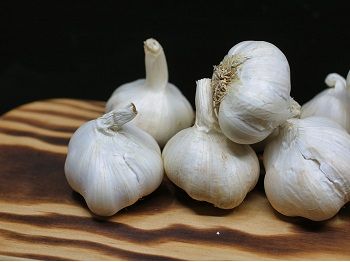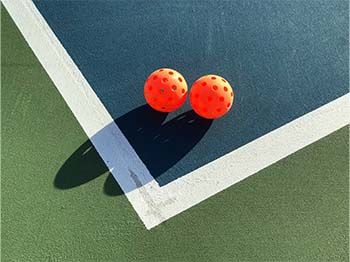Blue Zones - How to Live Into Your Hundreds
It seems as if a new article is published every week claiming to know the secret to the fountain of youth. Experts tell you to drink more water, eat a plant-based diet, and avoid alcohol. However, inevitably, a new batch of information comes out the following week that ultimately turns the previous information on its head. So how do we know what information is accurate?
It’s no secret that we all desire to live longer. The key may be found in studying the lifestyle and habits practiced by those living in Blue Zones. Below we dive into everything you need to know about these ageless regions of the world and how you can model your lifestyle after the people living there.
What Are Blue Zones, and Where Are They Located?
Blue Zones are specific regions around the world where people live longer than the average population. In fact, these regions have a higher proportion of people who live well into their hundreds compared to anywhere else in the world.
The term "Blue Zone" was first introduced by Giovanni Mario Pes and Michel Poulain as they studied longevity in Sardinia in the early 2000s. Around the same time, Dan Buettner, a New York Times bestselling author, studied these Blue Zones to discover the specific lifestyle and environmental aspects that led to longevity. His use of the term Blue Zone internationally was highly responsible for popularizing the common traits associated with these regions.
Through his investigation, along with Giovanni Mario Pes and Michel Poulain, Buettner determined five places where people live the longest, the healthiest, have ample energy, and seem to be the happiest. These are now referred to as Blue Zones.

What Are The Five Original Blue Zones?
The following are the five original Blue Zones:
-
Okinawa, Japan
-
Sardinia, Italy
-
Nicoya Peninsula, Costa Rica
-
Ikaria, Greece
-
Loma Linda, California
What Do The Blue Zones Have In Common?
At first, blue zones didn’t appear to have much in common. But upon further investigation, similarities begin to show. Not only are they smaller towns, but all blue zones are all located close to the ocean and have pleasant weather year-round. What ultimately connects these five places is what Buettner refers to as the "Power 9" – a series of evidence-based common denominators shared by all Blue Zones. The following is a list of the Power 9:
1. Move Naturally
Rather than perform strenuous workouts, Blue Zone inhabitants move naturally, incorporating movement throughout the day. They participate in outdoor activities, do yard and housework, and maintain gardens.
2. Purpose
Blue Zoners regularly express a sense of life purpose, even having regional names for it. In Okinawa it is called, “Ikigai,” and Nicoyans call it “plan de vida.”
3. Down Shift
The world’s longest-lived people regularly employ stress reduction practices, including prayer, the remembrance of one's ancestors, and even happy hour.
4. Percent Rule
Many Blue Zoners eat their smallest meal in the afternoon or early evening, giving ample time for digestion. On top of that, they mindfully stop eating when they are about 80 percent full, which helps with weight regulation.
5. Plant Slant
Most residents in Blue Zone regions focus on plant-based meals, including black beans, soy, and lentils. They also highly limit meat consumption to 3-4 ounces about five times a month and stick mostly to pork.
6. Wine at 5 pm
It turns out that moderate drinkers seem to outlive non-drinkers, and people in Blue Zones tend to enjoy one or two glasses of wine a day with friends during a meal.
7. Belong
An overwhelming majority of Blue Zoners interviewed by Buettner are active in a faith-based community. According to their research, attending faith-based services can add up to 4-14 years to one's life expectancy.
8. Loved Ones First
Blue Zoners are known to prioritize their families. Parents and grandparents live nearby and often in the home. They are usually committed to a life partner and regularly invest in their children’s lives.
9. Right Tribe
Okinawans created groups called “moais,” which consist of five friends committed to each other for life. These friends influence each other's health behaviors favorably and support each other.
Blue Zone Diet
People living in Blue Zones stick primarily to a plant-based diet and steer clear of meat, dairy, sugar, and processed food. Along with his research, Buettner developed a diet plan inspired by Blue Zone residents called the "Blue Zone Diet." Buettner recommends people following the Blue Zone Diet eat 95-100 percent plant-based foods. Many people in the Blue Zones eat various garden vegetables year-round, including spinach, kale, beet, chard, and collards. They combine these leafy greens with seasonal fruits and vegetables, whole grains, and beans.
Here are some tips for following the Blue Zone Diet:
-
Stop eating when your stomach is 80 percent full.
-
Eat the smallest meal of the day in the late afternoon.
-
Eat mostly plants, especially beans.
-
Eat meat rarely and in small portions.
-
Drink alcohol moderately.
It's important to note that not all regions eat the same foods.
Meals in Ikaria, Greece, emphasize potatoes, goat milk, and legumes with small amounts of fish. They also prepare their meals based on a tradition that Buettner believes has a lot to do with their longevity.
Okinawa, Japan, has one of the highest centenarian ratios globally. Their diet is rich in foods like tofu, soy, and miso. They also consume high amounts of turmeric in teas and soups, a powerful antioxidant and anticancer agent.
Sardinia, Italy, has long been the fascination of researchers trying to unlock the key to longevity. People here eat a lean, plant-based diet consisting of whole-grain bread, beans, vegetables, fruits, and goat milk. And yes, they do eat pasta!
Nicoya Peninsula, Costa Rica, is a popular relocation destination for people who want to live in a Blue Zone. They tend to stick to a traditional diet of black beans, bananas, plantains, papaya, and yams.
Loma Linda, California, enacts a "Garden of Eden" diet that rejects smoking and drinking. Their diet focuses on grains, fruits, nuts, and vegetables. The majority of residents in Loma Linda are Seventh-day Adventists, a faith that instructs them to treat their bodies as temples.
What Are Some Blue Zone Recipes?
One of the best ways to implement Blue Zone living is following the Blue Zone Diet. Blue Zone locations around the world inspire the following popular recipes:
Made with seasonal vegetables, this popular lunch dish always includes beans and fregula, a semolina pasta.
This nutrient-dense bowl includes four top Blue Zone foods: greens, beans, nuts, and grains.
Developed by Dan Buettner, this spinach dal recipe includes fresh veggies and greens - two of the top longevity foods found in Blue Zones.
This plant-based dish is a traditional Costa Rican meal that is well balanced and fully nutritious.
Of course, you can always create your own Blue Zone Recipes to suit your tastes. The best way to do this is to stick with foods that Blue Zoners eat, like beans, leafy greens, yams, whole grains, fruits, nuts, and legumes. Avoid recipes with too much meat, dairy, and processed food.
Are There Blue Zone Sports?
While there aren’t actual Blue Zone Sports, people living in Blue Zone regions love to stay active in their daily lives naturally. You aren't likely to find a 100-year-old Okinawan playing pickleball or lifting weights, but you may find them tending to their garden for hours. Okinawa residents are also avid walkers and spend plenty of time maintaining their house and doing chores. Residents in Loma Linda are also known for regularly walking to their destinations instead of driving.
Blue Zone populations don't typically commit to structured training plans but instead move naturally and often. The goal is to choose a physical activity that you enjoy and incorporate it organically into your schedule. One key takeaway from Blue Zoners is that exercise, like most daily activities, is done in a balanced and thoughtful fashion.
Blue Zone Wine: Does Wine Help With Longevity?
As you read above, the Power 9 includes "Wine @ 5." As part of the Blue Zone lifestyle, many residents enjoy moderate but regular consumption of wine with friends or as part of a meal – excluding the Adventists in Loma Linda. It is important to note that the centenarian’s alcohol consumption is not excessive. The key is to consume alcohol intentionally, mindfully, and enjoy the experience! There have been thousands of studies on the connection between wine and longevity. Most researchers have found that moderate wine consumption, regular exercise, and a healthy diet can prolong life expectancy by about 14 years for women and 12 for men.
Benefits of Blue Zone Living
There are numerous reasons why practicing a Blue Zone lifestyle leads to a longer, happier life. Here are some of the benefits shared by some of the longest living and most satisfied people on the planet:
-
They have more energy, feel more robust, and have a lower rate of chronic disease.
-
They have healthy weight management.
-
They have improved heart, brain, and mental health.
-
They have a sense of purpose.
-
They can better help their community, meet new people, and nurture supportive relationships.
-
Their environment and friend circle encourages regular stress-reduction practices and better sleep.
Conclusion
Globally, the average life expectancy is around 73.4 years old. However, it is not uncommon for those in Blue Zones to live past 100. Taking some cues from blue zone centenarians, you can now incorporate new healthful habits into your daily routine.
Are you looking for more tips on improving your health and longevity as you get older? We hope this article inspired you to take some fun first steps! Our Active Aging blog is full of tips and tricks for a healthier life. Join the Active Aging Facebook Group to join your peers in the quest to live a healthier and more fulfilled life.



